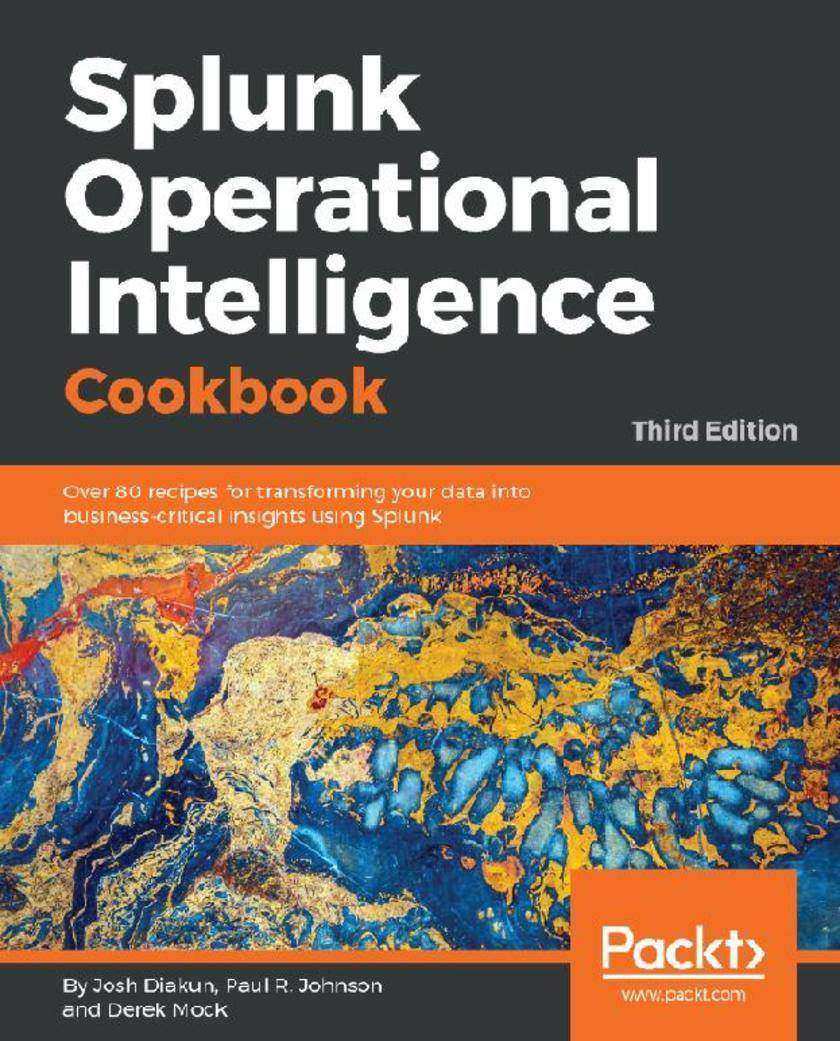
Splunk Operational Intelligence Cookbook
¥99.18
Leverage Splunk's operational intelligence capabilities to unlock new hidden business insights and drive success About This Book ? Tackle any problems related to searching and analyzing your data with Splunk ? Get the latest information and business insights on Splunk 7.x ? Explore the all new machine learning toolkit in Splunk 7.x Who This Book Is For This book is intended for data professionals who are looking to leverage the Splunk Enterprise platform as a valuable operational intelligence tool. The recipes provided in this book will appeal to individuals from all facets of business, IT, security, product, marketing, and many more! Even the existing users of Splunk who want to upgrade and get up and running with Splunk 7.x will find this book to be of great value. What You Will Learn ? Learn how to use Splunk to gather, analyze, and report on data ? Create dashboards and visualizations that make data meaningful ? Build an intelligent application with extensive functionalities ? Enrich operational data with lookups and workflows ? Model and accelerate data and perform pivot-based reporting ? Apply ML algorithms for forecasting and anomaly detection ? Summarize data for long term trending, reporting, and analysis ? Integrate advanced JavaScript charts and leverage Splunk's API In Detail Splunk makes it easy for you to take control of your data, and with Splunk Operational Cookbook, you can be confident that you are taking advantage of the Big Data revolution and driving your business with the cutting edge of operational intelligence and business analytics. With more than 70 recipes that demonstrate all of Splunk’s features, not only will you find quick solutions to common problems, but you’ll also learn a wide range of strategies and uncover new ideas that will make you rethink what operational intelligence means to you and your organization. You’ll discover recipes on data processing, searching and reporting, dashboards, and visualizations to make data shareable, communicable, and most importantly meaningful. You’ll also find step-by-step demonstrations that walk you through building an operational intelligence application containing vital features essential to understanding data and to help you successfully integrate a data-driven way of thinking in your organization. Throughout the book, you’ll dive deeper into Splunk, explore data models and pivots to extend your intelligence capabilities, and perform advanced searching with machine learning to explore your data in even more sophisticated ways. Splunk is changing the business landscape, so make sure you’re taking advantage of it. Style and approach With more than 70 recipes that demonstrate all of Splunk’s features, not only will you find quick solutions to common problems, but you’ll also learn a wide range of strategies and uncover new ideas that will make you rethink what operational intelligence means to you and your organization.
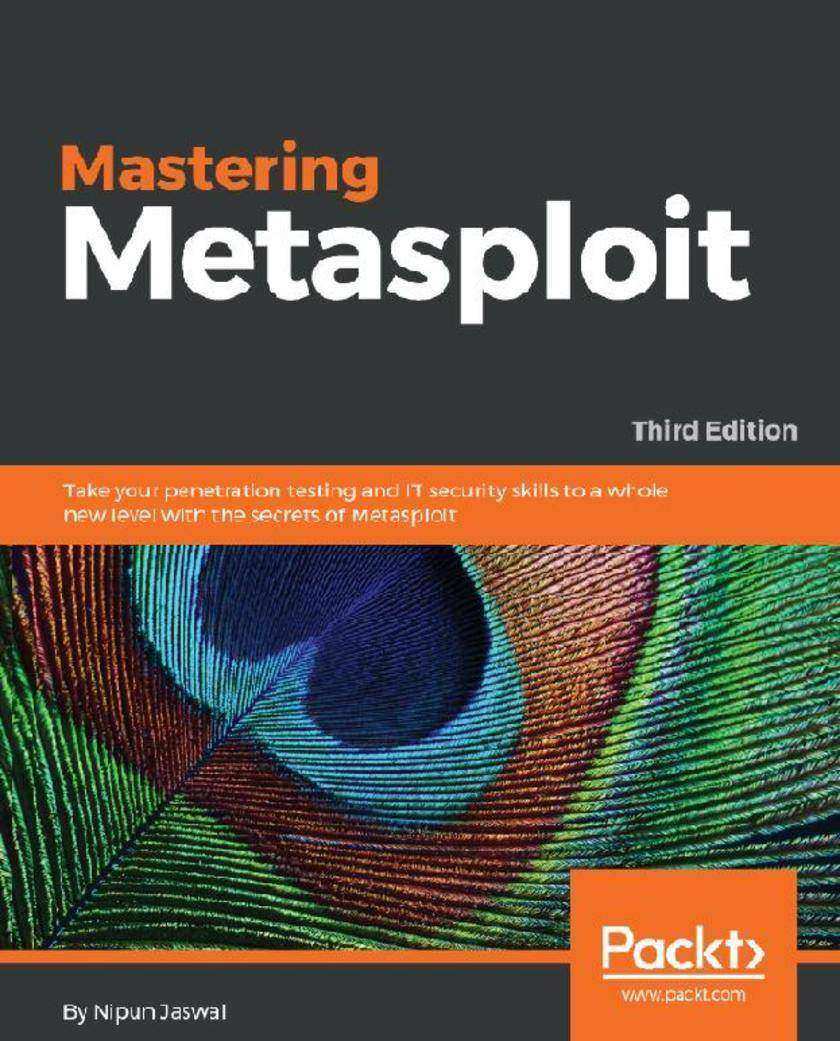
Mastering Metasploit
¥81.74
Discover the next level of network defense with the Metasploit framework About This Book ? Gain the skills to carry out penetration testing in complex and highly-secured environments ? Become a master using the Metasploit framework, develop exploits, and generate modules for a variety of real-world scenarios ? Get this completely updated edition with new useful methods and techniques to make your network robust and resilient Who This Book Is For This book is a hands-on guide to penetration testing using Metasploit and covers its complete development. It shows a number of techniques and methodologies that will help you master the Metasploit framework and explore approaches to carrying out advanced penetration testing in highly secured environments. What You Will Learn ? Develop advanced and sophisticated auxiliary modules ? Port exploits from PERL, Python, and many more programming languages ? Test services such as databases, SCADA, and many more ? Attack the client side with highly advanced techniques ? Test mobile and tablet devices with Metasploit ? Bypass modern protections such as an AntiVirus and IDS with Metasploit ? Simulate attacks on web servers and systems with Armitage GUI ? Script attacks in Armitage using CORTANA scripting In Detail We start by reminding you about the basic functionalities of Metasploit and its use in the most traditional ways. You’ll get to know about the basics of programming Metasploit modules as a refresher and then dive into carrying out exploitation as well building and porting exploits of various kinds in Metasploit. In the next section, you’ll develop the ability to perform testing on various services such as databases, Cloud environment, IoT, mobile, tablets, and similar more services. After this training, we jump into real-world sophisticated scenarios where performing penetration tests are a challenge. With real-life case studies, we take you on a journey through client-side attacks using Metasploit and various scripts built on the Metasploit framework. By the end of the book, you will be trained specifically on time-saving techniques using Metasploit. Style and approach This is a step-by-step guide that provides great Metasploit framework methodologies. All the key concepts are explained details with the help of examples and demonstrations that will help you understand everything you need to know about Metasploit.
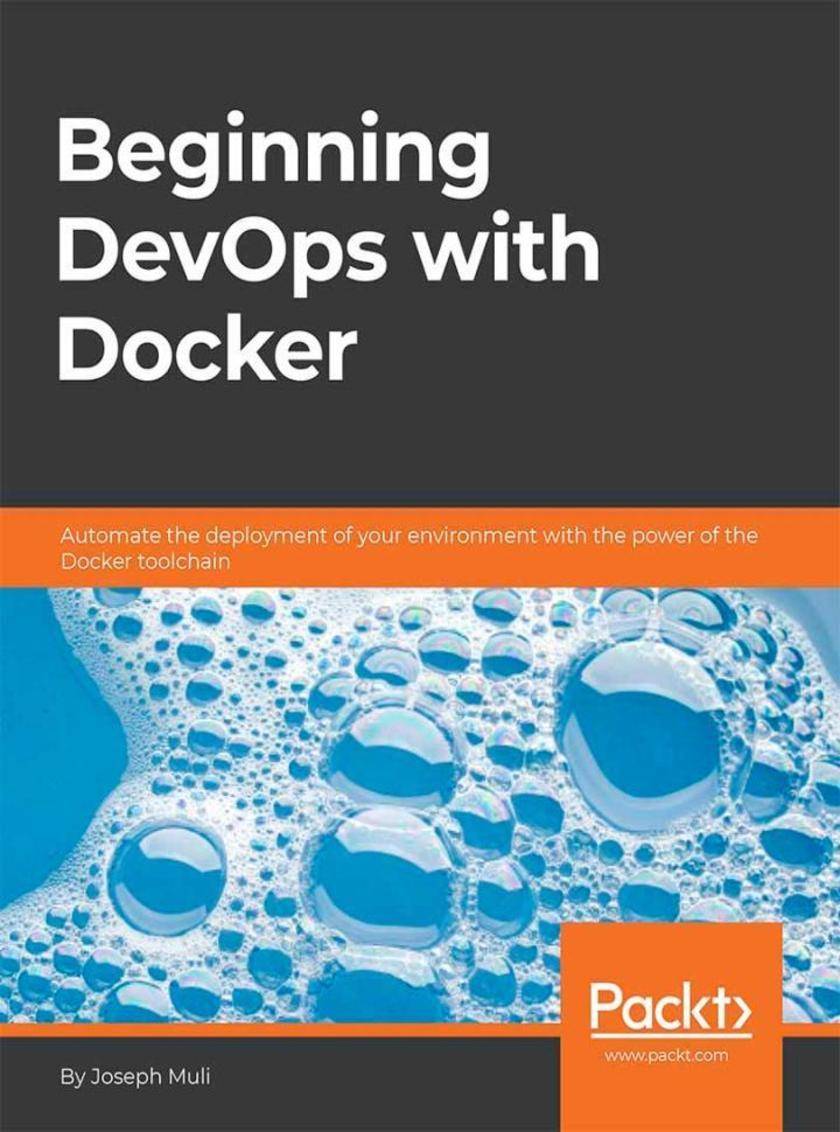
Beginning DevOps with Docker
¥90.46
Automate the deployment of your environment with the power of the Docker toolchain About This Book ? Written and reviewed by expert Docker developers ? The book precisely covers all the essential topics such as building images and managing container swarms required in day to day use for Docker ? The book includes activities on the docker CLI and exercises such as writing Dockerfiles for Python which will allow you to reinforce the concepts covered Who This Book Is For The book is crafted for developers, system architects, junior and mid-level site reliability engineers interested in adapting a docker workflow. They are also required to have a basic knowledge of UNIX concepts such as ssh, ports and logs What You Will Learn ? Understand how to effectively design and build containers for different applications ? Setup an environment for testing, avoiding environment mismatch that is breaking production ? Setup and manage a multi-tier environment ? Run, debug, and experiment with applications in a container In Detail DevOps with Docker outlines the power of containerization and the influence this innovation has on development teams and general operations. We also get to understand what DevOps really is, the principles involved and how the process contributes to product health, by implementing a Docker workflow. We will learn to interpret Dockerfile syntax, build images and setup containers and images. In addition, we will deploy a Docker image to the Docker Hub.Docker is an open source containerization tool, that makes it easier to streamline product delivery. It helps reduce the time taken to get from a whiteboard sketch of the business to a money-back implementation. This fast-paced book is a perfect amalgamation of theory and hands-on exercises. The book will take you through the basics of Docker and DevOps and why and how they integrate. You will then understand what containers are, and how to create and manage them. Next, we will work on the docker-compose file and CLI. Then we will move to set up a network with the docker-compose tool. Gradually you will learn how to scale a delivery pipeline and multiple deployments with Docker. Lastly, you will grasp the concept of orchestration and learn to implement the delivery of containerized applications. Style and approach This is a fast-paced, practical hands-on book aimed at experienced developers and system architects. As you progress you’ll find helpful tips and tricks, as well as useful self-assessment material, exercises and activities to help benchmark your progress and reinforce what you’ve learned. The activities are devised to simulate the real-world conditions in order to equip you with the necessary skills to accelerate software deployment while still retaining security, portability and saving on costs.
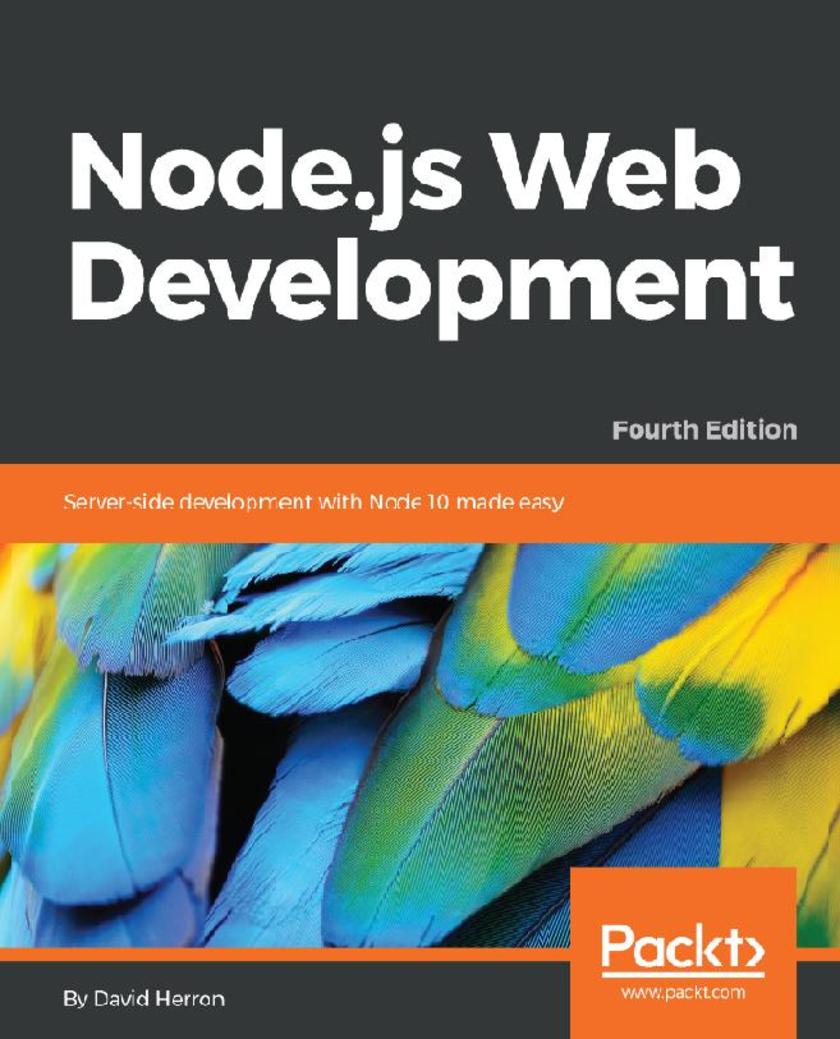
Node.js Web Development
¥81.74
Create real-time applications using Node.js 10, Docker, MySQL, MongoDB, and Socket.IO with this practical guide and go beyond the developer's laptop to cover live deployment, including HTTPS and hardened security. About This Book ? Learn server-side JavaScript coding through the most up-to-date book on Node.js ? Explore the latest JavaScript features, and EcmaScript modules ? Walk through different stages of developing robust applications using Node.js 10 Who This Book Is For This book is for anybody looking for an alternative to the "P" languages (Perl, PHP, and Python), or anyone looking for a new paradigm of server-side application development. You should have at least a rudimentary understanding of JavaScript and web application development. What You Will Learn ? Install and use Node.js 10 for both development and deployment ? Use the Express 4.16 application framework ? Work with REST service development using the Restify framework ? Use data storage engines such as MySQL, SQLITE3, and MongoDB ? Use User authentication methods with OAuth2 ? Perform Real-time communication with the front-end using Socket.IO ? Implement Docker microservices in development, testing and deployment ? Perform unit testing with Mocha 5.x, and functional testing with Puppeteer 1.1.x ? Work with HTTPS using Let’s Encrypt, and application security with Helmet In Detail Node.js is a server-side JavaScript platform using an event-driven, non-blocking I/O model allowing users to build fast and scalable data-intensive applications running in real time. This book gives you an excellent starting point, bringing you straight to the heart of developing web applications with Node.js. You will progress from a rudimentary knowledge of JavaScript and server-side development to being able to create, maintain, deploy and test your own Node.js application.You will understand the importance of transitioning to functions that return Promise objects, and the difference between fs, fs/promises and fs-extra. With this book you'll learn how to use the HTTP Server and Client objects, data storage with both SQL and MongoDB databases, real-time applications with Socket.IO, mobile-first theming with Bootstrap, microservice deployment with Docker, authenticating against third-party services using OAuth, and use some well known tools to beef up security of Express 4.16 applications. Style and approach Benefit from an easy, step-by-step approach that really works.
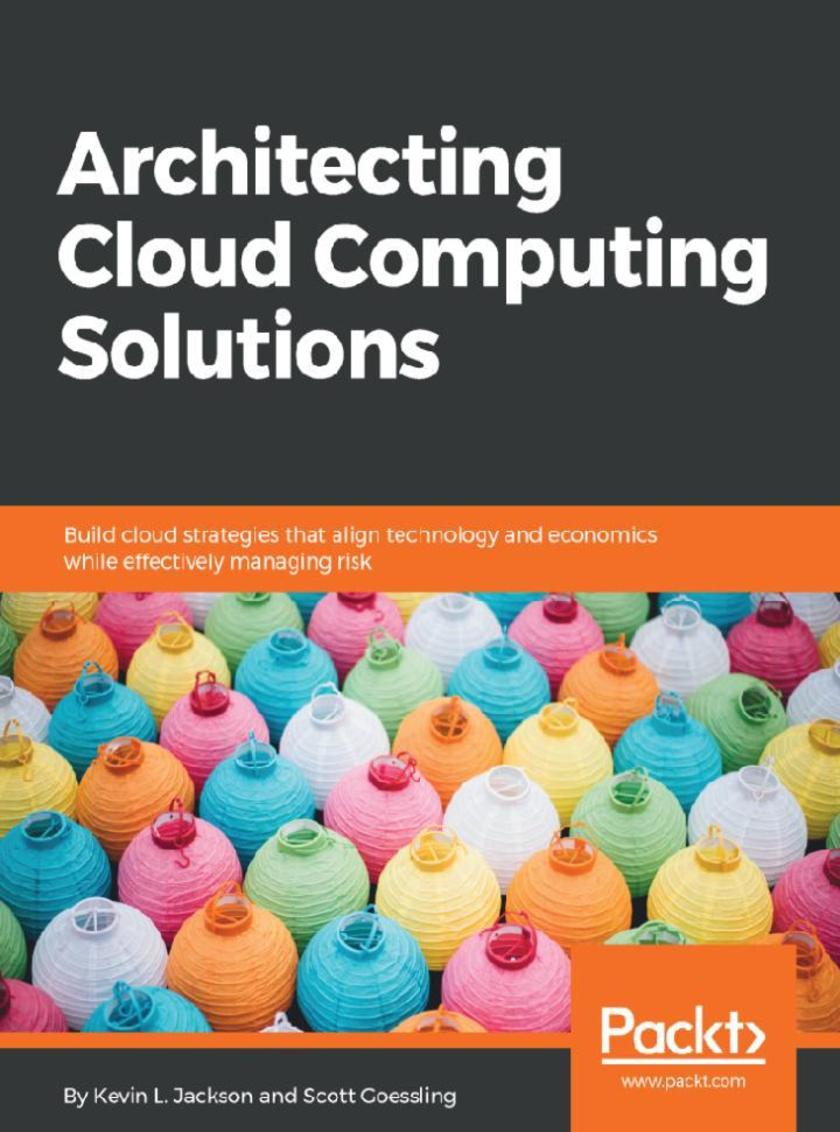
Architecting Cloud Computing Solutions
¥73.02
Accelerating Business and Mission Success with Cloud Computing. About This Book ? A step-by-step guide that will practically guide you through implementing Cloud computing services effectively and efficiently. ? Learn to choose the most ideal Cloud service model, and adopt appropriate Cloud design considerations for your organization. ? Leverage Cloud computing methodologies to successfully develop a cost-effective Cloud environment successfully. Who This Book Is For If you are an IT Administrator, Cloud Architect, or a Solution Architect keen to benefit from cloud adoption for your organization, then this book is for you. Small business owners, managers, or consultants will also find this book useful. No prior knowledge of Cloud computing is needed. What You Will Learn ? Manage changes in the digital transformation and cloud transition process ? Design and build architectures that support specific business cases ? Design, modify, and aggregate baseline cloud architectures ? Familiarize yourself with cloud application security and cloud computing security threats ? Design and architect small, medium, and large cloud computing solutions In Detail Cloud adoption is a core component of digital transformation. Scaling the IT environment, making it resilient, and reducing costs are what organizations want. Architecting Cloud Computing Solutions presents and explains critical Cloud solution design considerations and technology decisions required to choose and deploy the right Cloud service and deployment models, based on your business and technology service requirements. This book starts with the fundamentals of cloud computing and its architectural concepts. It then walks you through Cloud service models (IaaS, PaaS, and SaaS), deployment models (public, private, community, and hybrid) and implementation options (Enterprise, MSP, and CSP) to explain and describe the key considerations and challenges organizations face during cloud migration. Later, this book delves into how to leverage DevOps, Cloud-Native, and Serverless architectures in your Cloud environment and presents industry best practices for scaling your Cloud environment. Finally, this book addresses (in depth) managing essential cloud technology service components such as data storage, security controls, and disaster recovery. By the end of this book, you will have mastered all the design considerations and operational trades required to adopt Cloud services, no matter which cloud service provider you choose. Style and approach This book will teach you how to architect effective and organizationally aligned Cloud computing solutions by addressing Cloud computing fundamentals, Cloud architecture considerations, Cloud technology service selection, and Cloud computing security controls.
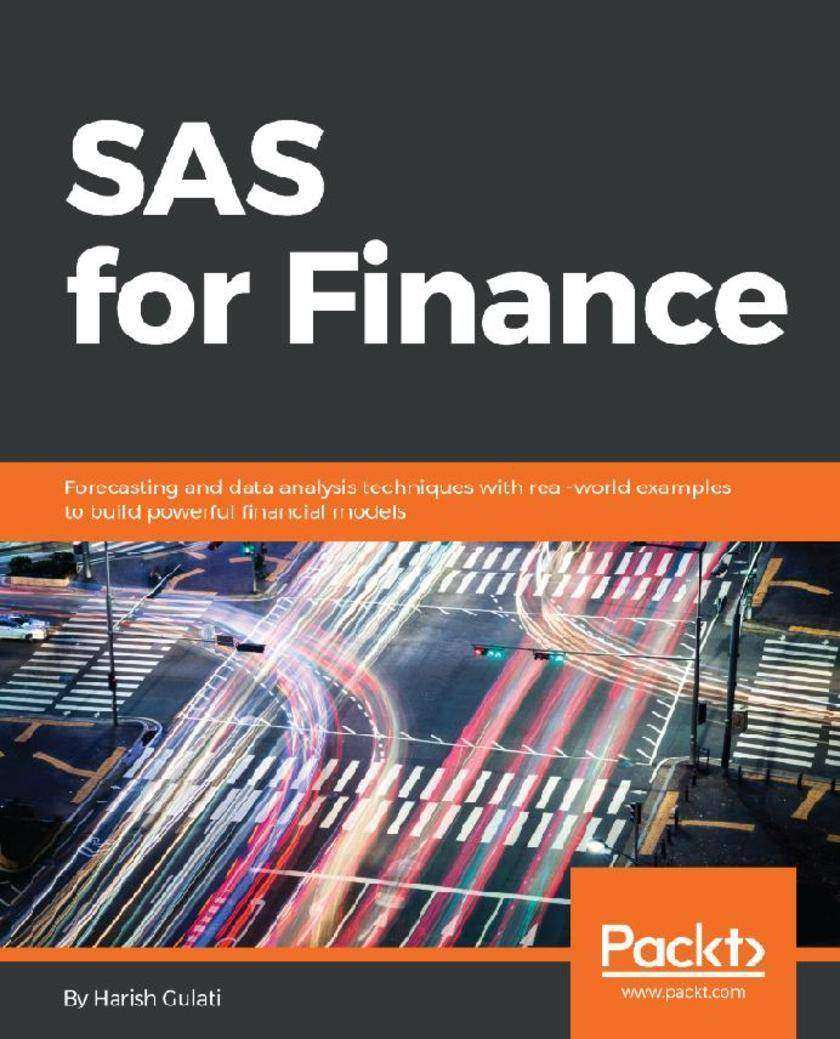
SAS for Finance
¥73.02
Leverage the analytical power of SAS to perform financial analysis efficiently About This Book ? Leverage the power of SAS to analyze financial data with ease ? Find hidden patterns in your data, predict future trends, and optimize risk management ? Learn why leading banks and financial institutions rely on SAS for financial analysis Who This Book Is For Financial data analysts and data scientists who want to use SAS to process and analyze financial data and find hidden patterns and trends from it will find this book useful. Prior exposure to SAS will be helpful but is not mandatory. Some basic understanding of the financial concepts is required. What You Will Learn ? Understand time series data and its relevance in the financial industry ? Build a time series forecasting model in SAS using advanced modeling theories ? Develop models in SAS and infer using regression and Markov chains ? Forecast in?ation by building an econometric model in SAS for your financial planning ? Manage customer loyalty by creating a survival model in SAS using various groupings ? Understand similarity analysis and clustering in SAS using time series data In Detail SAS is a groundbreaking tool for advanced predictive and statistical analytics used by top banks and financial corporations to establish insights from their financial data. SAS for Finance offers you the opportunity to leverage the power of SAS analytics in redefining your data. Packed with real-world examples from leading financial institutions, the author discusses statistical models using time series data to resolve business issues. This book shows you how to exploit the capabilities of this high-powered package to create clean, accurate financial models. You can easily assess the pros and cons of models to suit your unique business needs. By the end of this book, you will be able to leverage the true power of SAS to design and develop accurate analytical models to gain deeper insights into your financial data. Style and approach A comprehensive guide filled with use-cases will ensure that you have a very good conceptual and practical understanding of using SAS in the finance domain.
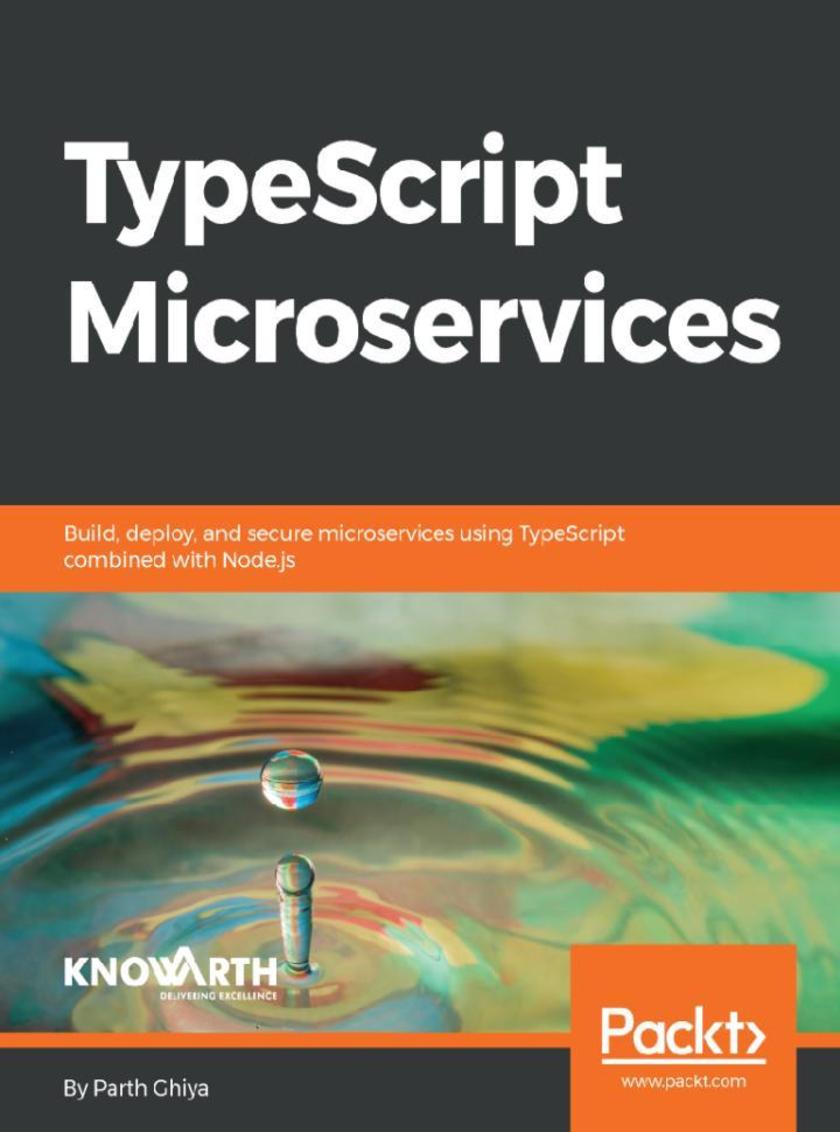
TypeScript Microservices
¥81.74
Build robust microservice-based applications that are distributed, fault tolerant, and always available About This Book ? Learn to build message-driven services for effective communication ? Design microservices API using Reactive programming design patterns ? Deploy, scale and monitor microservices for consistent high performance Who This Book Is For This book is for JavaScript developers seeking to utilize their Node.js and Typescript skills to build microservices and move away from the monolithic architecture. Prior knowledge of TypeScript and Node.js is assumed. What You Will Learn ? Get acquainted with the fundamentals behind microservices. ? Explore the behavioral changes needed for moving from monolithic to microservices. ? Dive into reactive programming, Typescript and Node.js to learn its fundamentals in microservices ? Understand and design a service gateway and service registry for your microservices. ? Maintain the state of microservice and handle dependencies. ? Perfect your microservice with unit testing and Integration testing ? Develop a microservice, secure it, deploy it, and then scale it In Detail In the last few years or so, microservices have achieved the rock star status and right now are one of the most tangible solutions in enterprises to make quick, effective, and scalable applications. The apparent rise of Typescript and long evolution from ES5 to ES6 has seen lots of big companies move to ES6 stack. If you want to learn how to leverage the power of microservices to build robust architecture using reactive programming and Typescript in Node.js, then this book is for you. Typescript Microservices is an end-to-end guide that shows you the implementation of microservices from scratch; right from starting the project to hardening and securing your services. We will begin with a brief introduction to microservices before learning to break your monolith applications into microservices. From here, you will learn reactive programming patterns and how to build APIs for microservices. The next set of topics will take you through the microservice architecture with TypeScript and communication between services. Further, you will learn to test and deploy your TypeScript microservices using the latest tools and implement continuous integration. Finally, you will learn to secure and harden your microservice. By the end of the book, you will be able to build production-ready, scalable, and maintainable microservices using Node.js and Typescript. Style and approach This book will be a step by step easy to follow guide with focused examples for building microservices with Typescript.
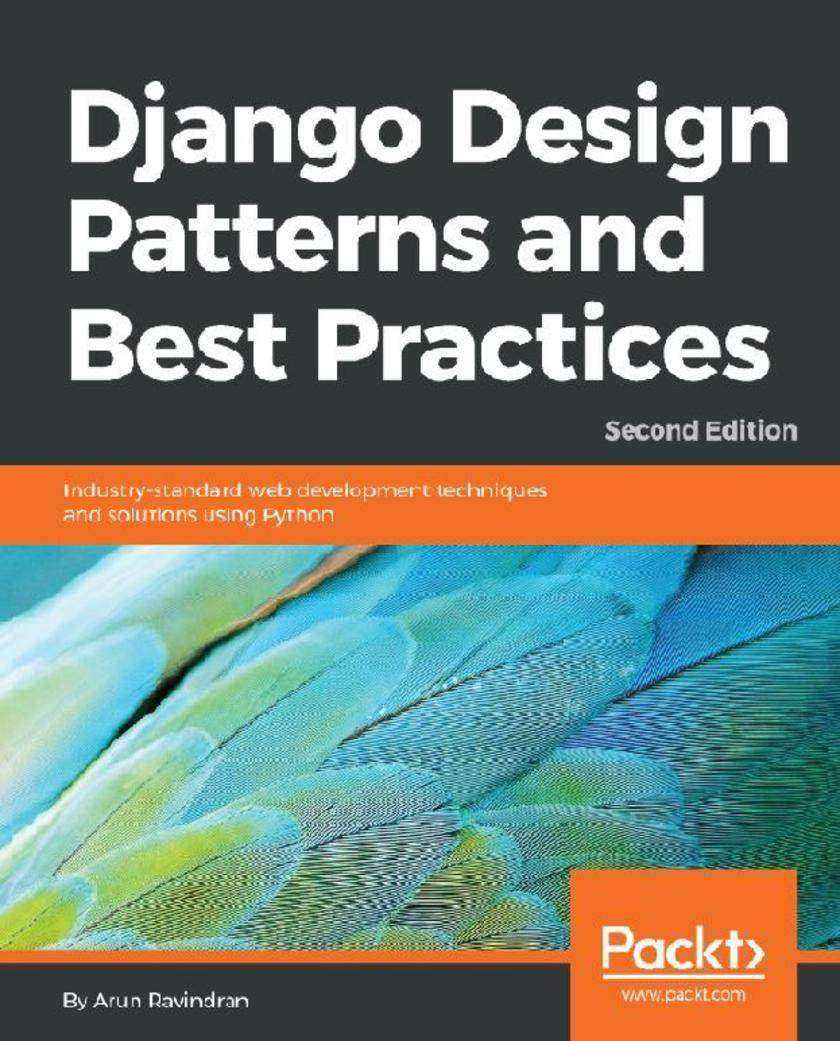
Django Design Patterns and Best Practices
¥81.74
Build maintainable websites with elegant Django design patterns and modern best practices About This Book ? Explore aspects of Django from Models and Views to testing and deployment ? Understand the nuances of web development such as browser attack and data design ? Walk through various asynchronous tools such as Celery and Channels Who This Book Is For This book is for you whether you’re new to Django or just want to learn its best practices. You do not have to be an expert in Django or Python. No prior knowledge of patterns is expected for reading this book but it would be helpful. What You Will Learn ? Make use of common design patterns to help you write better code ? Implement best practices and idioms in this rapidly evolving framework ? Deal with legacy code and debugging ? Use asynchronous tools such as Celery, Channels, and asyncio ? Use patterns while designing API interfaces with the Django REST Framework ? Reduce the maintenance burden with well-tested, cleaner code ? Host, deploy, and secure your Django projects In Detail Building secure and maintainable web applications requires comprehensive knowledge. The second edition of this book not only sheds light on Django, but also encapsulates years of experience in the form of design patterns and best practices. Rather than sticking to GoF design patterns, the book looks at higher-level patterns. Using the latest version of Django and Python, you’ll learn about Channels and asyncio while building a solid conceptual background. The book compares design choices to help you make everyday decisions faster in a rapidly changing environment. You’ll first learn about various architectural patterns, many of which are used to build Django. You’ll start with building a fun superhero project by gathering the requirements, creating mockups, and setting up the project. Through project-guided examples, you’ll explore the Model, View, templates, workflows, and code reusability techniques. In addition to this, you’ll learn practical Python coding techniques in Django that’ll enable you to tackle problems related to complex topics such as legacy coding, data modeling, and code reusability. You’ll discover API design principles and best practices, and understand the need for asynchronous workflows. During this journey, you’ll study popular Python code testing techniques in Django, various web security threats and their countermeasures, and the monitoring and performance of your application. Style and approach This comprehensive project-driven guide will enhance your skill set by taking you through the well-known design patterns and industry-standard best practices in Django web development.
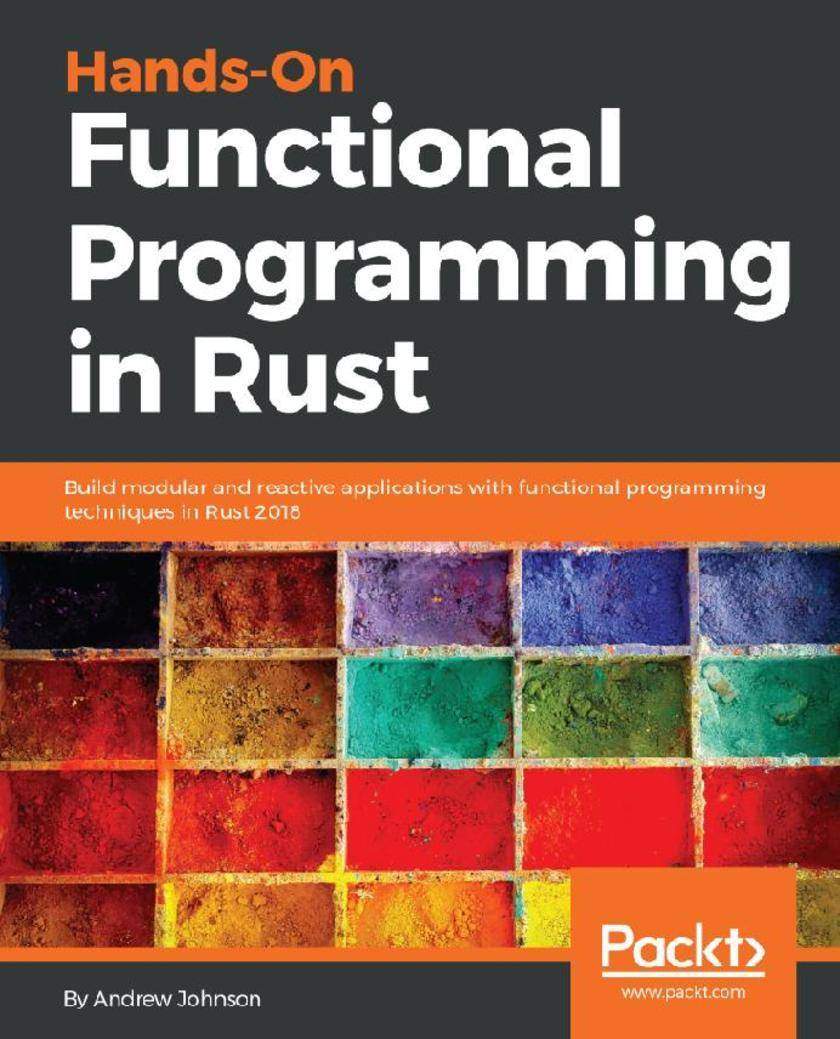
Hands-On Functional Programming in Rust
¥81.74
Explore the support Rust offers for creating functional applications in Rust. Learn about various design patterns, implementing concurrency, metaprogramming, and so on in the process About This Book ? Learn generics, organization, and design patterns in functional programming ? Modularize your applications and make them highly reusable and testable using functional design patterns ? Get familiar with complex concepts such as metaprogramming, concurrency, and immutability Who This Book Is For This book is for Rust developers who are comfortable with the language and now want to improve their coding abilities by learning advanced functional techniques to enhance their skillset and create robust and testable apps. What You Will Learn ? How Rust supports the use of basic functional programming principles ? Use functional programming to handle concurrency with elegance ? Read and interpret complex type signatures for types and functions ? Implement powerful abstractions using meta programming in Rust ? Create quality code formulaically using Rust's functional design patterns ? Master Rust's complex ownership mechanisms particularly for mutability In Detail Functional programming allows developers to divide programs into smaller, reusable components that ease the creation, testing, and maintenance of software as a whole. Combined with the power of Rust, you can develop robust and scalable applications that fulfill modern day software requirements. This book will help you discover all the Rust features that can be used to build software in a functional way. We begin with a brief comparison of the functional and object-oriented approach to different problems and patterns. We then quickly look at the patterns of control flow, data the abstractions of these unique to functional programming. The next part covers how to create functional apps in Rust; mutability and ownership, which are exclusive to Rust, are also discussed. Pure functions are examined next and you'll master closures, their various types, and currying. We also look at implementing concurrency through functional design principles and metaprogramming using macros. Finally, we look at best practices for debugging and optimization. By the end of the book, you will be familiar with the functional approach of programming and will be able to use these techniques on a daily basis. Style and approach Step-by-step guide covering advanced concepts and building functional applications in Rust
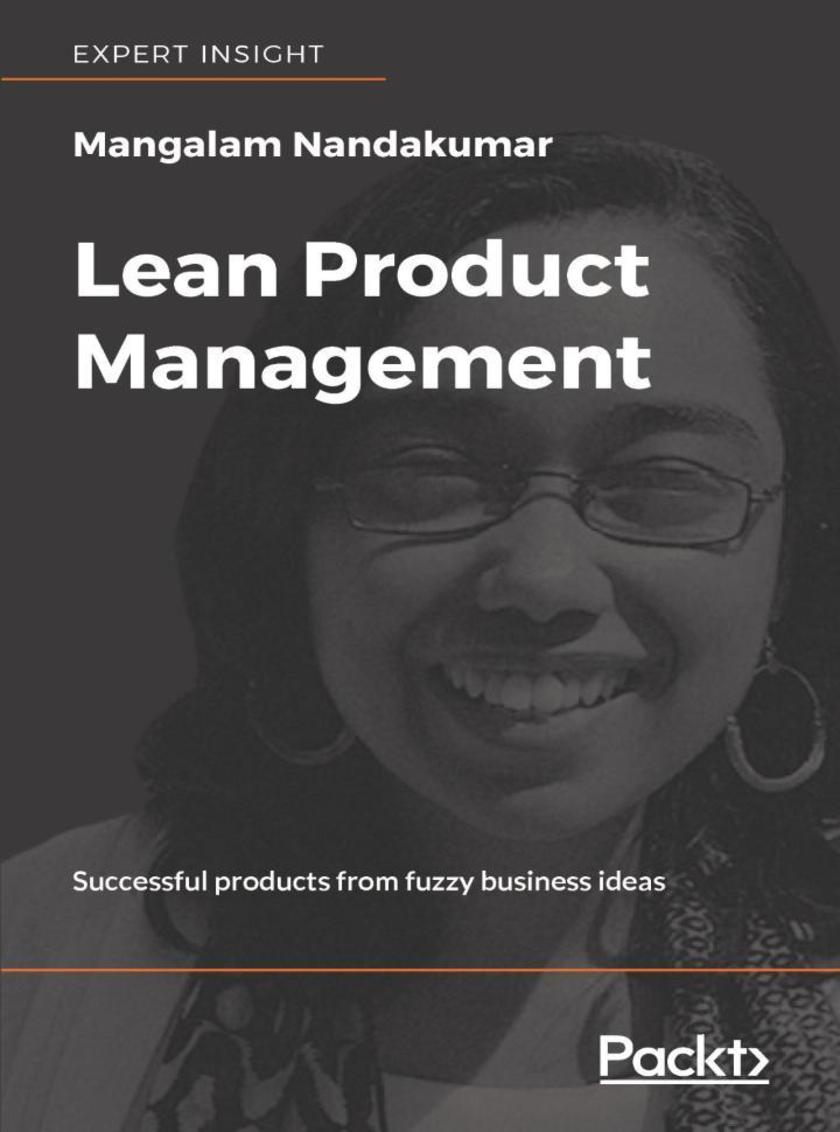
Lean Product Management
¥54.49
A guide to product management exploring the best practices: identifying the impact-driven product, planning for success, setting up and measuring time-bound metrics, and developing a lean product roadmap. About This Book ? Identifying Impact-Driven Products ? Investing in Key Business Outcomes ? Value mapping to maintain a lean product backlog ? Utilizing time-bound product metrics ? Eliminating process waste Who This Book Is For If you are leading a team that is building a new product, then this book is for you. The book is targeted at product managers, functional leads in enterprises, business sponsors venturing into new product offerings, product development teams, and start-up founders. What You Will Learn ? How do you execute ideas that matter? ? How can you define the right success metrics? ? How can you plan for product success? ? How do you capture qualitative and quantitative insights about the product? ? How do you know whether your product aligns to desired business goals? ? What processes are slowing you down? In Detail Lean Product Management is about finding the smartest way to build an Impact Driven Product that can deliver value to customers and meet business outcomes when operating under internal and external constraints. Author, Mangalam Nandakumar, is a product management expert, with over 17 years of experience in the field. Businesses today are competing to innovate. Cost is no longer the constraint, execution is. It is essential for any business to harness whatever competitive advantage they can, and it is absolutely vital to deliver the best customer experience possible. The opportunities for creating impact are there, but product managers have to improvise on their strategy every day in order to capitalize on them. This is the Agile battleground, where you need to stay Lean and be able to respond to abstract feedback from an ever shifting market. This is where Lean Product Management will help you thrive. Lean Product Management is an essential guide for product managers, and to anyone embarking on a new product development. Mangalam Nandakumar will help you to align your product strategy with business outcomes and customer impact. She introduces the concept of investing in Key Business Outcomes as part of the product strategy in order to provide an objective metric about which product idea and strategy to pursue. You will learn how to create impactful end-to-end product experiences by engaging stakeholders and reacting to external feedback. Style and approach The first few chapters of Lean Product Management address how to arrive at a product road map. It guides you through the process of getting stakeholder buy-in, prioritizing Key Business Outcomes and identifying the Impact-Driven Product, and arriving at a Cost-Impact matrix through value mapping. The next few chapters address how to define time-bound success metrics. It guides you through the process of creating an end-to-end product experience, capturing qualitative and quantitative insights to track product performance and alignment to short and long term product strategy. The last set of chapters of the book address process bottlenecks that hold teams back from building products right and how to eliminate process waste.
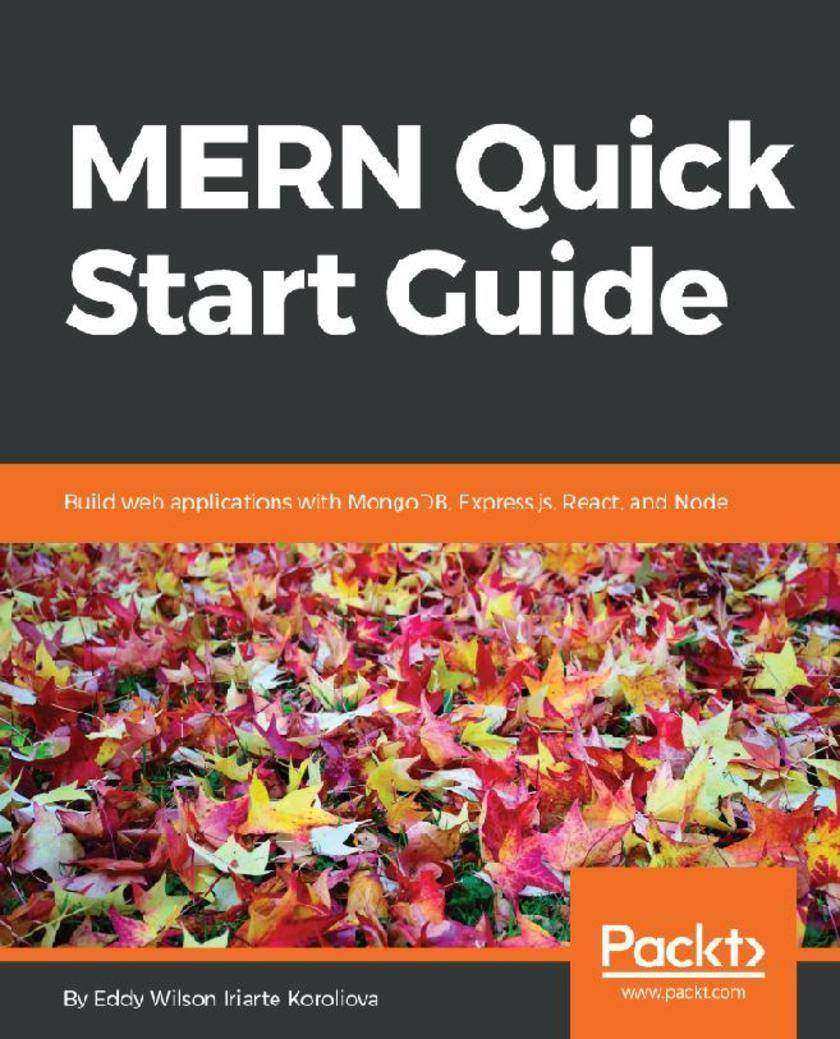
MERN Quick Start Guide
¥54.49
Build web applications with MongoDB, ExpressJS, React, and Node About This Book ? Build applications with the MERN stack ? Work with each component of the MERN stack ? Become confident with MERN and ready for more! Who This Book Is For The book is for JavaScript developers who want to get stated with the MERN Stack. What You Will Learn ? Get started with the MERN stack ? Install Node.js and configure MongoDB ? Build RESTful APIs with Express.js and Mongoose ? Build real-time applications with Socket.IO ? Manage synchronous and asynchronous data flows with Redux ? Build web applications with React In Detail The MERN stack is a collection of great tools—MongoDB, Express.js, React, and Node—that provide a strong base for a developer to build easily maintainable web applications. With each of them a JavaScript or JavaScript-based technology, having a shared programming language means it takes less time to develop web applications. This book focuses on providing key tasks that can help you get started, learn, understand, and build full-stack web applications. It walks you through the process of installing all the requirements and project setup to build client-side React web applications, managing synchronous and asynchronous data flows with Redux, and building real-time web applications with Socket.IO, RESTful APIs, and other concepts. This book gives you practical and clear hands-on experience so you can begin building a full-stack MERN web application. Quick Start Guides are focused, shorter titles that provide a faster paced introduction to a technology. They are for people who don't need all the detail at this point in their learning curve. The presentation has been streamlined to concentrate on the things you really need to know. Style and approach This guide shows you how to use your JavaScript knowledge to build web applications that use the MERN stack in both client-side and in server-side environments.
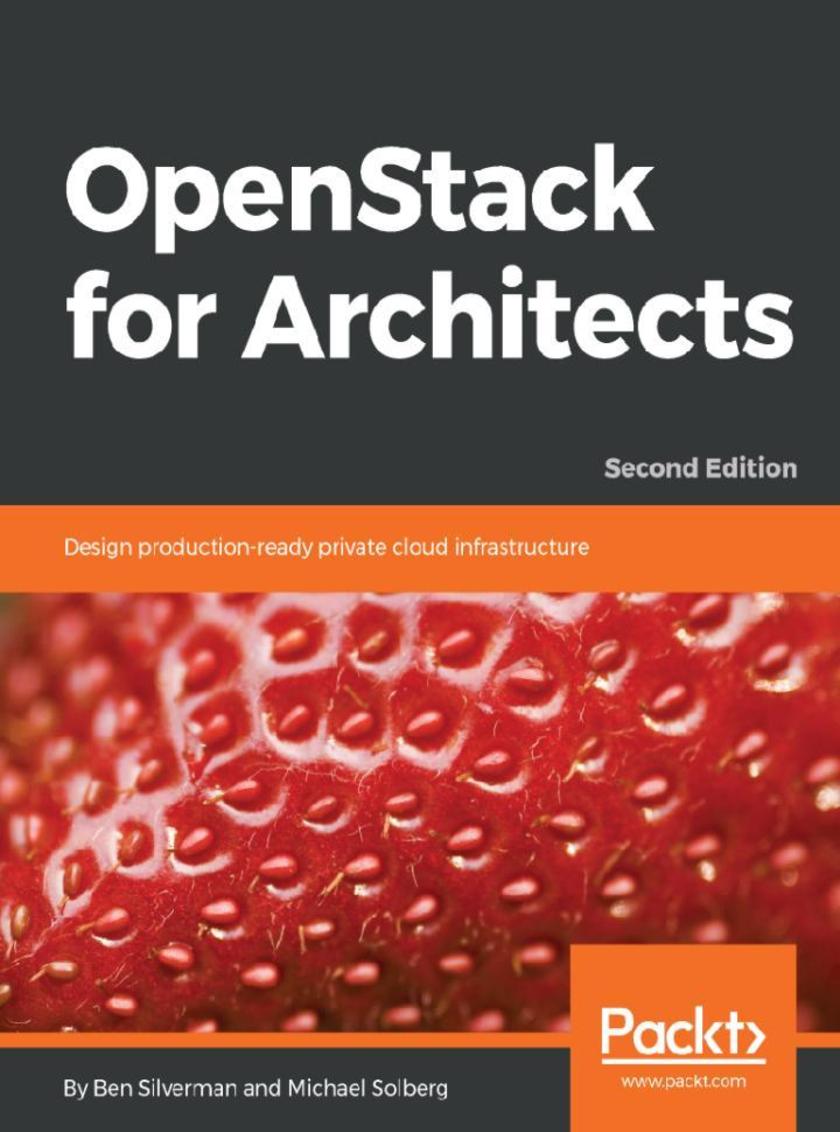
OpenStack for Architects
¥73.02
Implement successful private clouds with OpenStack About This Book ? Gain hands-on experience in designing a private cloud for all infrastructures ? Create a robust virtual environment for your organization ? Design, implement and deploy an OpenStack-based cloud based on the Queens release Who This Book Is For OpenStack for Architects is for Cloud architects who are responsible to design and implement a private cloud with OpenStack. System engineers and enterprise architects will also find this book useful. Basic understanding of core OpenStack services, as well as some working experience of concepts, is recommended. What You Will Learn ? Learn the overall structure of an OpenStack deployment ? Craft an OpenStack deployment process which fits within your organization ? Apply Agile Development methodologies to engineer and operate OpenStack clouds ? Build a product roadmap for Infrastructure as a Service based on OpenStack ? Make use of containers to increase the manageability and resiliency of applications running in and on OpenStack. ? Use enterprise security guidelines for your OpenStack deployment In Detail Over the past six years, hundreds of organizations have successfully implemented Infrastructure as a Service (IaaS) platforms based on OpenStack. The huge amount of investment from these organizations, including industry giants such as IBM and HP, as well as open source leaders, such as Red Hat, Canonical, and SUSE, has led analysts to label OpenStack as the most important open source technology since the Linux operating system. Due to its ambitious scope, OpenStack is a complex and fast-evolving open source project that requires a diverse skill set to design and implement it. OpenStack for Architects leads you through the major decision points that you'll face while architecting an OpenStack private cloud for your organization. This book will address the recent changes made in the latest OpenStack release i.e Queens, and will also deal with advanced concepts such as containerization, NVF, and security. At each point, the authors offer you advice based on the experience they've gained from designing and leading successful OpenStack projects in a wide range of industries. Each chapter also includes lab material that gives you a chance to install and configure the technologies used to build production-quality OpenStack clouds. Most importantly, the book focuses on ensuring that your OpenStack project meets the needs of your organization, which will guarantee a successful rollout. Style and approach This is practical, hands-on guide to implementing OpenStack clouds, where each topic is illustrated with real-world examples and then the technical points are proven in the lab. Conceptual chapters are written in discussion style to convey important concepts quickly and present decision points for choosing options.
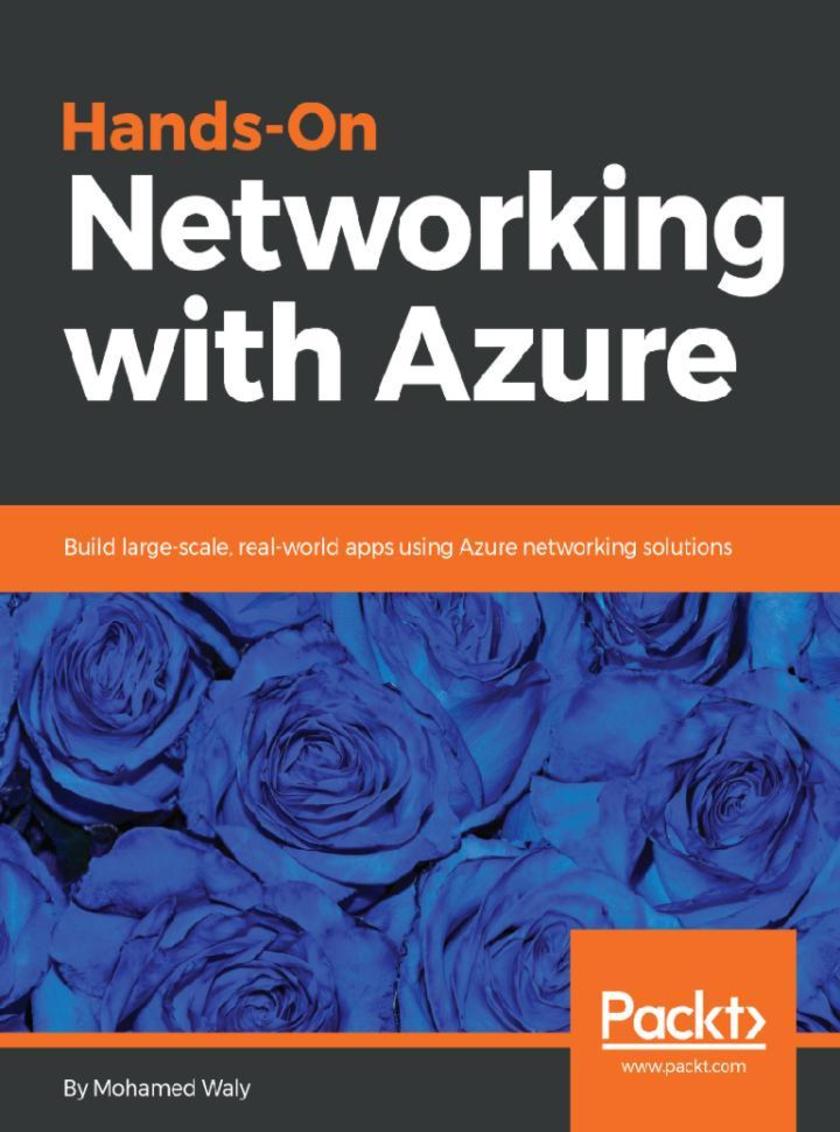
Hands-On Networking with Azure
¥73.02
A step-by-step guide to get you up and running with Azure Networking Services and help you build solutions that leverage effective design patterns About This Book ? Learn best practices for designing and implementing Azure Networking for Azure VMs ? Figure out the hidden secrets to designing a cost-effective environment ? Plan, design, and implement various connectivity scenarios in Azure Who This Book Is For This book is for developers, IT professionals, and database admins who have prior experience of working on Microsoft Azure and want to make the most out of Azure Networking Services. What You Will Learn ? Understand Azure networking and use the right networking service to fulfill your needs ? Design Azure Networks for Azure VMs according to best practices ? Span your environment with Azure networking solutions ? Learn to use Azure DNS ? Implement Azure Load Balancer for highly available environments ? Distribute user traffic across the world via the Azure Traffic Manager ? Control your application delivery with Azure Application Gateway In Detail Microsoft Azure networking is one of the most valuable and important offerings in Azure. No matter what solution you are building for the cloud, you'll find a compelling use for it. This book will get you up to speed quickly on Microsoft Azure Networking by teaching you how to use different networking services. By reading this book, you will develop a strong networking foundation for Azure virtual machines and for expanding your on-premise environment to Azure. Hands-On Networking with Azure starts with an introduction to Microsoft Azure networking and creating Azure Virtual Networks with subnets of different types within them. The book helps you understand the architecture of Azure networks. You will then learn the best practices for designing both Windows- and Linux-based Azure VM networks. You will also learn to expand your networks into Azure and how to use Azure DNS. Moreover, you will master best practices for dealing with Azure Load Balancer and the solutions they offer in different scenarios. Finally, we will demonstrate how the Azure Application Gateway works, offering various layer-7 load balancing capabilities for applications. By the end of this book, you will be able to architect your networking solutions for Azure. Style and approach This book provides in-depth insights into properly designing your environment and saving money on your running Azure Services. Using cutting-edge examples, you will learn to efficiently monitor, diagnose, and troubleshoot Azure Networking
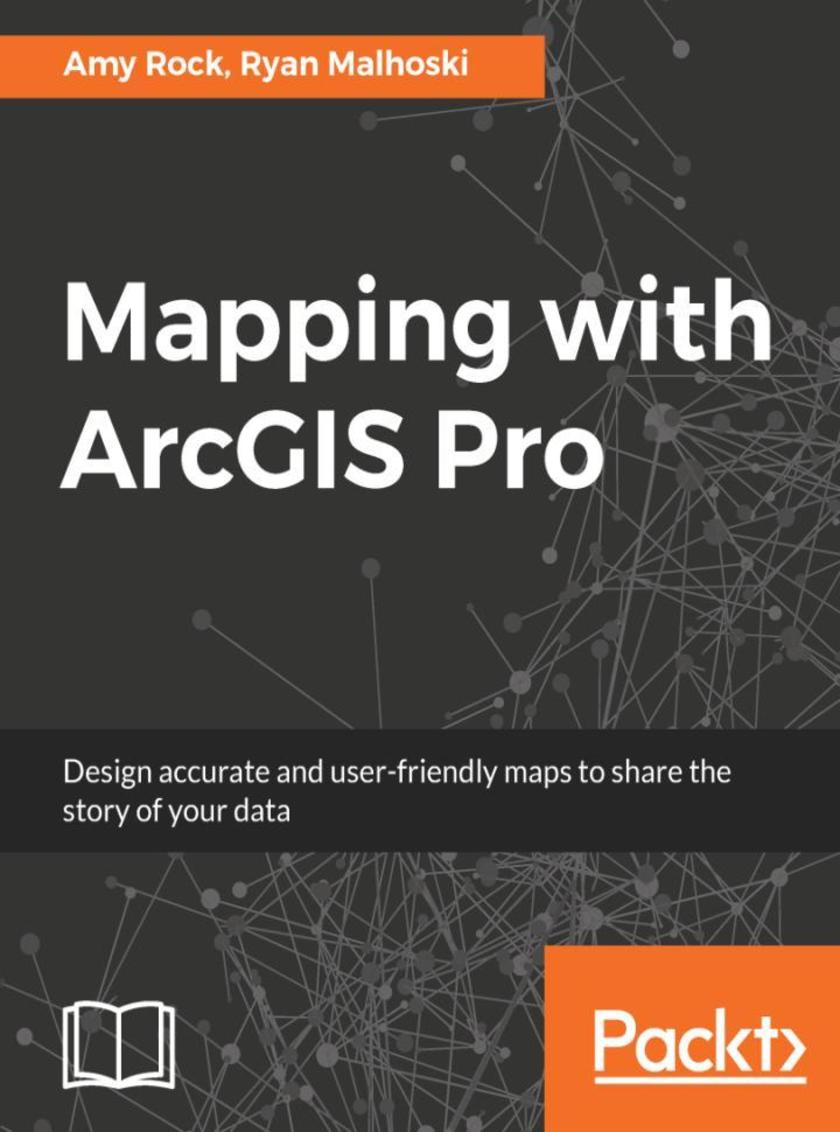
Mapping with ArcGIS Pro
¥81.74
Implementing the ArcGIS Pro technique to design accurate, user friendly maps and making appropriate cartographic decisions About This Book ? Build visually stunning and useful maps; ? Understand the cartographic workflows and the decisions you must take before creating the map; ? Learn to create appropriate map elements and layout designs ? Use the ArcGIS Online's Smart Mapping technique to create clear webmaps Who This Book Is For If you are a GIS analyst or a Map designer who would like to create and design a map with ArcGIS Pro then this book is for you. A basic GIS knowledge is assumed. What You Will Learn ? Using ArcGIS Pro to create visually stunning maps and make confident cartographic decisions ? Leverage precise layout grids that will organize and guide the placement of map elements ? Make appropriate decisions about color and symbols ? Critically evaluate and choose the perfect projection for your data ? Create clear webmaps that focus the reader’s attention using ArcGIS Online’s Smart Mapping capabilities In Detail ArcGIS Pro is a geographic information system for working with maps and geographic information. This book will help you create visually stunning maps that increase the legibility of the stories being mapped and introduce visual and design concepts into a traditionally scientific, data-driven process. The book begins by outlining the steps of gathering data from authoritative sources and lays out the workflow of creating a great map. Once the plan is in place you will learn how to organize the Contents Pane in ArcGIS Pro and identify the steps involved in streamlining the production process. Then you will learn Cartographic Design techniques using ArcGIS Pro's feature set to organize the page structure and create a custom set of color swatches. You will be then exposed to the techniques required to ensure your data is clear and legible no matter the size or scale of your map. The later chapters will help you understand the various projection systems, trade-offs between them, and the proper applications of them to make sure your maps are accurate and visually appealing. Finally, you will be introduced to the ArcGIS Online ecosystem and how ArcGIS Pro can utilize it within the application. You will learn Smart Mapping, a new feature of ArcGIS Online that will help you to make maps that are visually stunning and useful. By the end of this book, you will feel more confident in making appropriate cartographic decisions. Style and approach The book takes a pragmatic approach, showing various methods to create visually stunning maps.
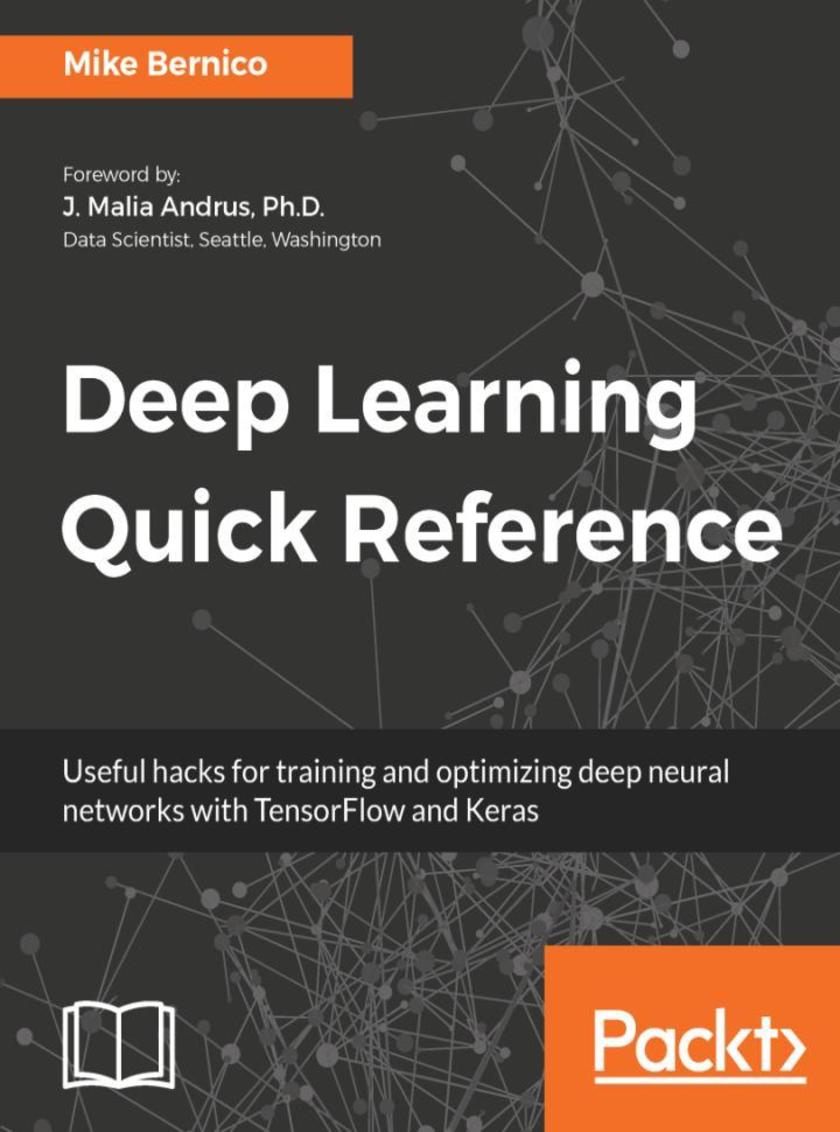
Deep Learning Quick Reference
¥73.02
Dive deeper into neural networks and get your models trained, optimized with this quick reference guide About This Book ? A quick reference to all important deep learning concepts and their implementations ? Essential tips, tricks, and hacks to train a variety of deep learning models such as CNNs, RNNs, LSTMs, and more ? Supplemented with essential mathematics and theory, every chapter provides best practices and safe choices for training and fine-tuning your models in Keras and Tensorflow. Who This Book Is For If you are a Data Scientist or a Machine Learning expert, then this book is a very useful read in training your advanced machine learning and deep learning models. You can also refer this book if you are stuck in-between the neural network modeling and need immediate assistance in getting accomplishing the task smoothly. Some prior knowledge of Python and tight hold on the basics of machine learning is required. What You Will Learn ? Solve regression and classification challenges with TensorFlow and Keras ? Learn to use Tensor Board for monitoring neural networks and its training ? Optimize hyperparameters and safe choices/best practices ? Build CNN's, RNN's, and LSTM's and using word embedding from scratch ? Build and train seq2seq models for machine translation and chat applications. ? Understanding Deep Q networks and how to use one to solve an autonomous agent problem. ? Explore Deep Q Network and address autonomous agent challenges. In Detail Deep learning has become an essential necessity to enter the world of artificial intelligence. With this book deep learning techniques will become more accessible, practical, and relevant to practicing data scientists. It moves deep learning from academia to the real world through practical examples. You will learn how Tensor Board is used to monitor the training of deep neural networks and solve binary classification problems using deep learning. Readers will then learn to optimize hyperparameters in their deep learning models. The book then takes the readers through the practical implementation of training CNN's, RNN's, and LSTM's with word embeddings and seq2seq models from scratch. Later the book explores advanced topics such as Deep Q Network to solve an autonomous agent problem and how to use two adversarial networks to generate artificial images that appear real. For implementation purposes, we look at popular Python-based deep learning frameworks such as Keras and Tensorflow, Each chapter provides best practices and safe choices to help readers make the right decision while training deep neural networks. By the end of this book, you will be able to solve real-world problems quickly with deep neural networks. Style and approach An easy-to-follow, step-by-step guide to help you get to grips with real-world applications of training deep neural networks.
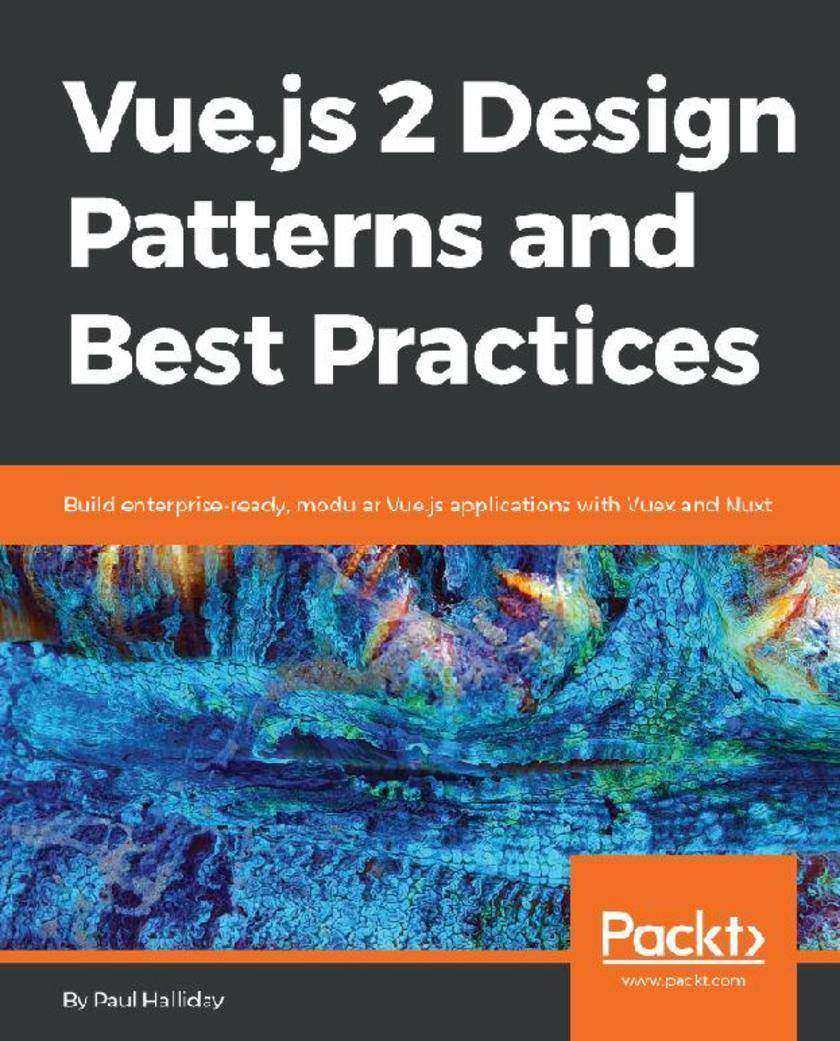
Vue.js 2 Design Patterns and Best Practices
¥81.74
Become an expert Vue developer by understanding the design patterns and component architecture of Vue.js to write clean and maintainable code. About This Book ? Craft highly modular applications by exploring the design patterns and component architecture of Vue.js ? Enforce a Flux-like application architecture in your Vue.js applications with Vuex ? Easy-to-follow examples that can be used to create reusable code and extensible designs Who This Book Is For This book targets Vue Developers who care about framework design principles and utilize commonly found design patterns in developing web applications. What You Will Learn ? Understand the theory and patterns of Vue.js ? Build scalable and modular Vue.js applications ? Take advantage of Vuex for reactive state management. ? Create Single Page Applications with vue-router. ? Use Nuxt for FAST server side rendered Vue applications. ? Convert your application to a Progressive Web App (PWA) and add ServiceWorkers, offline support, and more ? Build your app with Vue.js by following up with best practices and explore the common anti-patterns to avoid In Detail The book starts by comparing Vue.js with other frameworks and setting up the development environment for your application, and gradually move on to writing and styling clean, maintainable, and reusable components that can be used across your application. Further on, you'll look at common UI patterns, Vue form submission, and various modifiers such as lazy binding, number typecasting, and string trimming to create better UIs. You will also explore best practices for integrating HTTP into Vue.js applications to create an application with dynamic data. Routing is a vitally important part of any SPA, so you will focus on the Vue router and explore routing a user between multiple pages. Next, you'll also explore state management with Vuex, write testable code for your application, and create performant, server-side rendered applications with Nuxt. Towards the end, we'll look at common antipatterns to avoid, to save you from a lot of trial and error and development headaches. By the end of this book, you'll be well on your way to becoming an expert Vue developer who can leverage design patterns to efficiently architect the design of your application and write clean and maintainable code. Style and approach This easy-to-follow practical guide will help you develop efficient Vue.js apps by following best practices and using common design patterns.
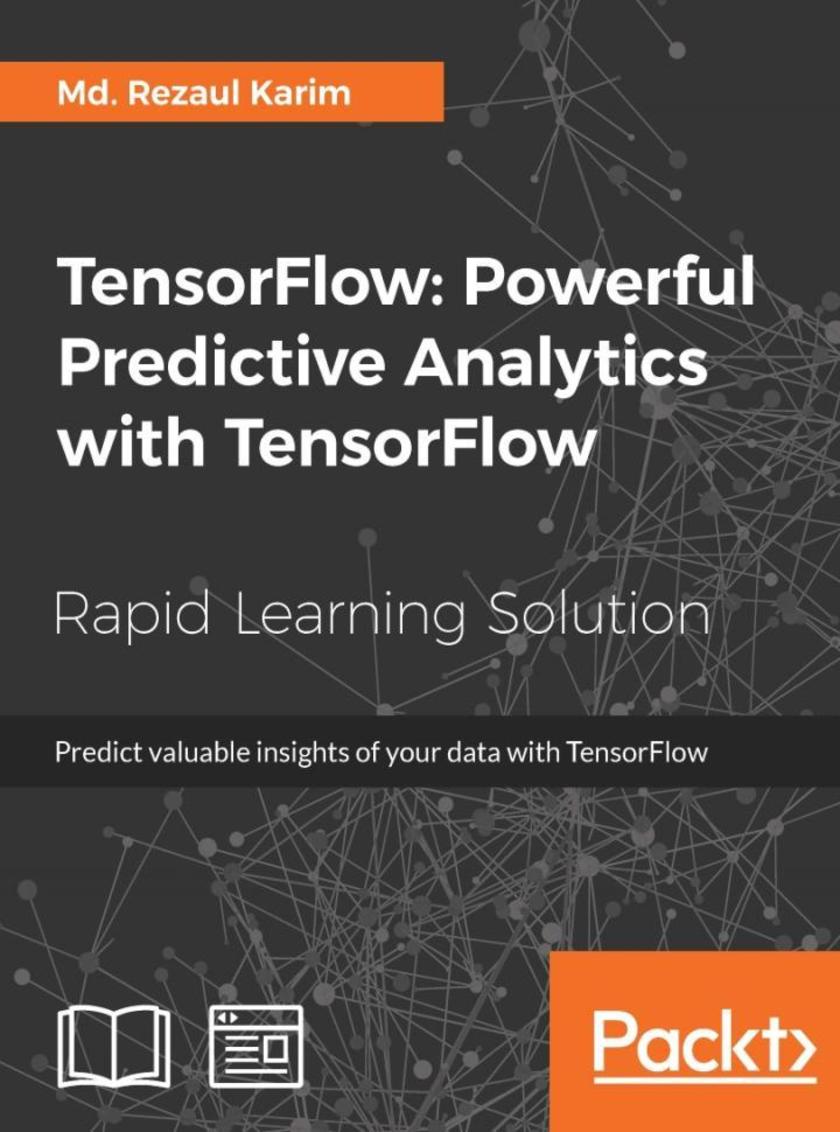
TensorFlow: Powerful Predictive Analytics with TensorFlow
¥73.02
Learn how to solve real life problems using different methods like logic regression, random forests and SVM’s with TensorFlow. About This Book ? Understand predictive analytics along with its challenges and best practices ? Embedded with assessments that will help you revise the concepts you have learned in this book Who This Book Is For This book is aimed at developers, data analysts, machine learning practitioners, and deep learning enthusiasts who want to build powerful, robust, and accurate predictive models with the power of TensorFlow. What You Will Learn ? Learn TensorFlow features in a real-life problem, followed by detailed TensorFlow installation and configuration ? Explore computation graphs, data, and programming models also get an insight into an example of implementing linear regression model for predictive analytics ? Solve the Titanic survival problem using logistic regression, random forests, and SVMs for predictive analytics ? Dig deeper into predictive analytics and find out how to take advantage of it to cluster records belonging to the certain group or class for a dataset of unsupervised observations ? Learn several examples of how to apply reinforcement learning algorithms for developing predictive models on real-life datasets In Detail Predictive analytics discovers hidden patterns from structured and unstructured data for automated decision making in business intelligence. Predictive decisions are becoming a huge trend worldwide, catering to wide industry sectors by predicting which decisions are more likely to give maximum results. TensorFlow, Google’s brainchild, is immensely popular and extensively used for predictive analysis. This book is a quick learning guide on all the three types of machine learning, that is, supervised, unsupervised, and reinforcement learning with TensorFlow. This book will teach you predictive analytics for high-dimensional and sequence data. In particular, you will learn the linear regression model for regression analysis. You will also learn how to use regression for predicting continuous values. You will learn supervised learning algorithms for predictive analytics. You will explore unsupervised learning and clustering using K-meansYou will then learn how to predict neighborhoods using K-means, and then, see another example of clustering audio clips based on their audio features. This book is ideal for developers, data analysts, machine learning practitioners, and deep learning enthusiasts who want to build powerful, robust, and accurate predictive models with the power of TensorFlow. This book is embedded with useful assessments that will help you revise the concepts you have learned in this book. Style and approach This is a fast-paced guide that provides a quick learning solution to all the three types of machine learning, that is, supervised, unsupervised, and reinforcement learning with TensorFlow Note: This book is a blend of text and quizzes, all packaged up keeping your journey in mind. It includes content from the following Packt product: ? Predictive Analytics with TensorFlow by Md. Rezaul Karim

Getting Started with Unity 2018 - Third Edition
¥81.74
Learn how to use Unity 2018 by creating your very own 3D game while developing your essential skills About This Book ? Learn to create immersive 3D games and Virtual Reality experiences with Unity 2018 ? Build custom scripts to make your game characters interactive ? Explore and implement AritificiaI Intelligence techniques to bring your game to life Who This Book Is For If you are an aspiring game developer interested in learning Unity 2018 and becoming familiar with its core features, then this book is for you. No prior knowledge of Unity is required. What You Will Learn ? Set up your Unity development environment and navigate its tools ? Import and use custom assets and asset packages to add characters to your game ? Build a 3D game world with a custom terrain, water, sky, mountains, and trees ? Animate game characters, using animation controllers, and scripting ? Apply audio and particle effects to the game ? Create intuitive game menus and interface elements ? Customize your game with sound effects, shadows, lighting effects, and rendering options ? Debug code and provide smooth error handling In Detail The Unity game engine has revolutionized the gaming industry with its complete set of intuitive tools and rapid workflows, which can be used to create interactive 3D content. With Unity, you can scaffold your way from the basics and make make stunning interactive games. This book will guide you through the entire process of creating a 3D game, from downloading the Unity game engine to publishing your game. It not only gives you a strong foundation, but puts you on the path to game development. Beginning with an overview of the Unity engine and its interface, you will walk through the process of creating a game environment and learn how to use built-in assets, as well as assets created with third-party 3D modeling tools such as Blender. Moving on, you will create custom scripts to control non-player character behaviors and gameplay. You will master exciting concepts such as Heads-Up-Displays, mini-maps, game navigation, sound effects, and lighting effects. Next, you’ll learn how to create your first VR experience, right from setting up the project to image effects. You'll be familiarized with all the tools that Unity has to offer to create your own immersive VR experiences. Each section is a stepping stone toward the completion of the final game. By the end of the book, you'll have learned advanced topics such as cross-platform considerations which enable your games to run on multiple platforms. Style and approach A step-by-step guide giving you the perfect start to developing 3D games with Unity 2018
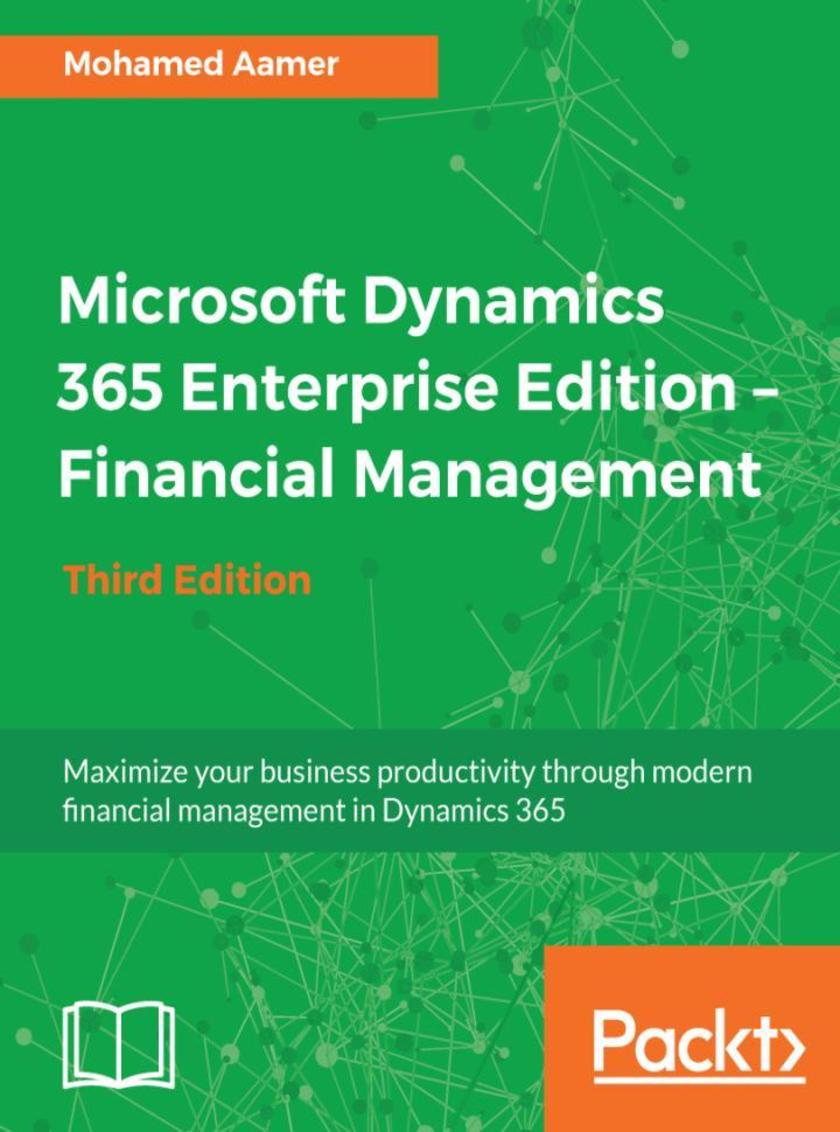
Microsoft Dynamics 365 Enterprise Edition – Financial Management - Third Edition
¥99.18
Boost your accounting and financial skills with Microsoft Dynamics 365 About This Book ? Make real-time data-driven decisions for your enterprise with Microsoft Dynamics 365 Enterprise edition ? Configure and set up the Microsoft Dynamics 365 financial module via highly useful tips and tricks ? Administer customer relations and plan enterprise resources with this systematic guide Who This Book Is For This book is for application consultants, solution architects, controllers, CFOs, pre-sales and other professionals who are involved in a Microsoft Dynamics 365 for finance and operation implementation. Basic knowledge of financial terms, concepts, and terminologies is required. What You Will Learn ? Examine the business logic behind the financial functionalities of Microsoft Dynamics 365 FFO ? Set up and configure the core modules of financial management ? Grasp the key control points of financial management ? Explore intercompany and consolidation in Microsoft Dynamics 365 FFO ? Understand multi-currency sales, tax mechanisms, and budgeting capabilities in Microsoft Dynamics 365 FFO ? Get to grips with month/year-end period close functionality ? Understand the account payable and receivable module ? Use Microsoft Dynamics 365 to create financial reports In Detail Microsoft Dynamics 365 for finance and operations is a rapidly growing application and is widely used in enterprise organizations. Because of its ability to maximize business productivity, it is a fast-growing business application package in the ERP market. We will start by looking into ERP concepts, implementation needs, and interface design, giving you basic knowledge of financial management aspects and explaining key concepts along the way. To begin with, you'll be taken through the general ledger and financial dimension functions. You'll later learn about the sales tax mechanism and multi-currency in Microsoft Dynamics 365. We tackle each topic with focused examples and explanations on topics such as payable/receivable accounts, forecasting, cash and bank management, budgeting planning/control, and fixed assets. Finally, we walk you through intercompany, consolidation, costing basics, and financial reporting. By the end of this book, your finance team will have a much richer understanding of Microsoft Dynamics 365 for finance and operations and its powerful capabilities. Style and approach This book is a step-by-step guide focusing on implementing Dynamics 365 financial management for your organization.
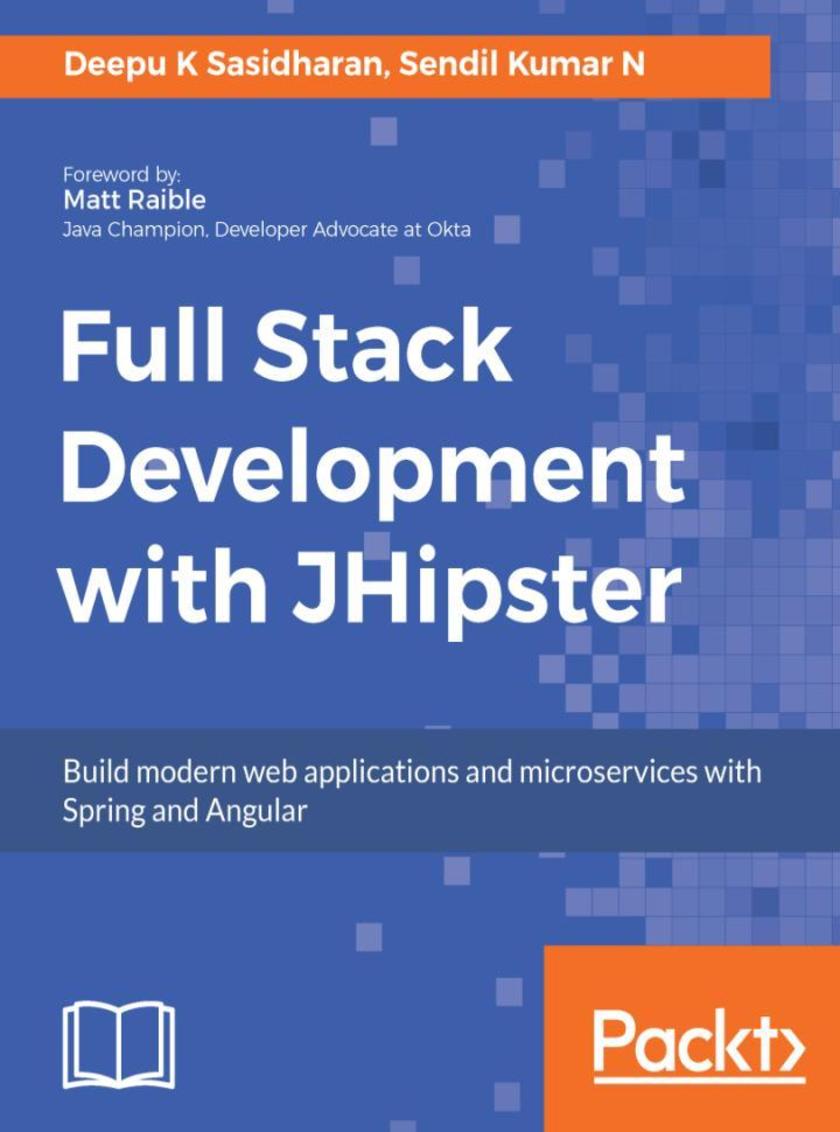
Full Stack Development with JHipster
¥81.74
Discover the world of Full Stack Development with real-world examples. About This Book ? Leverage the full power of the JHipster platform to build complex web applications ? Create microservices from scratch and convert JHipster monolith apps into microservices ? Build and deploy applications locally, in Docker and on various cloud platforms. Who This Book Is For This book will appeal to developers who would like to build modern web applications quickly. A basic knowledge of the Spring ecosystem would be an added advantage. What You Will Learn ? Build business logic by creating and developing entity models us the JHipster Domain Language ? Customize web applications with Angular, Bootstrap and Spring ? Tests and Continuous Integration with Jenkins ? Utilize the JHipster microservice stack, which includes Netflix Eureka, Spring Cloud config, HashiCorp Consul, and so on. ? Understand advanced microservice concepts such as API rout, load balancing, rate limit, circuit break, centralized configuration server, JWT authentication, and more ? Run microservices locally using Docker and Kubernetes (in production) In Detail JHipster is a development platform to generate, develop, and deploy Spring Boot and Angular/React applications and Spring microservices. It provides you with a variety of tools that will help you quickly build modern web applications. This book will be your guide to building full stack applications with Spring and Angular using the JHipster tool set. You will begin by understanding what JHipster is and the various tools and technologies associated with it. You will learn the essentials of a full stack developer before getting hands-on and building a monolithic web application with JHipster. From here you will learn the JHipster Domain Language with entity modeling and entity creation using JDL and JDL studio. Moving on, you will be introduced to client side technologies such as Angular and Bootstrap and will delve into technologies such as Spring Security, Spring MVC, and Spring Data. You will learn to build and package apps for production with various deployment options such as Heroku and more. During the course of the book, you will be introduced to microservice server-side technologies and how to break your monolithic application with a database of your choice. Next, the book takes you through cloud deployment with microservices on Docker and Kubernetes. Going forward, you will learn to build your client side with React and master JHipster best practices. By the end of the book, you will be able to leverage the power of the best tools available to build modern web applications. Style and approach This comprehensive guide builds a complex production-ready Spring Boot + Angular web application using JHipster platform
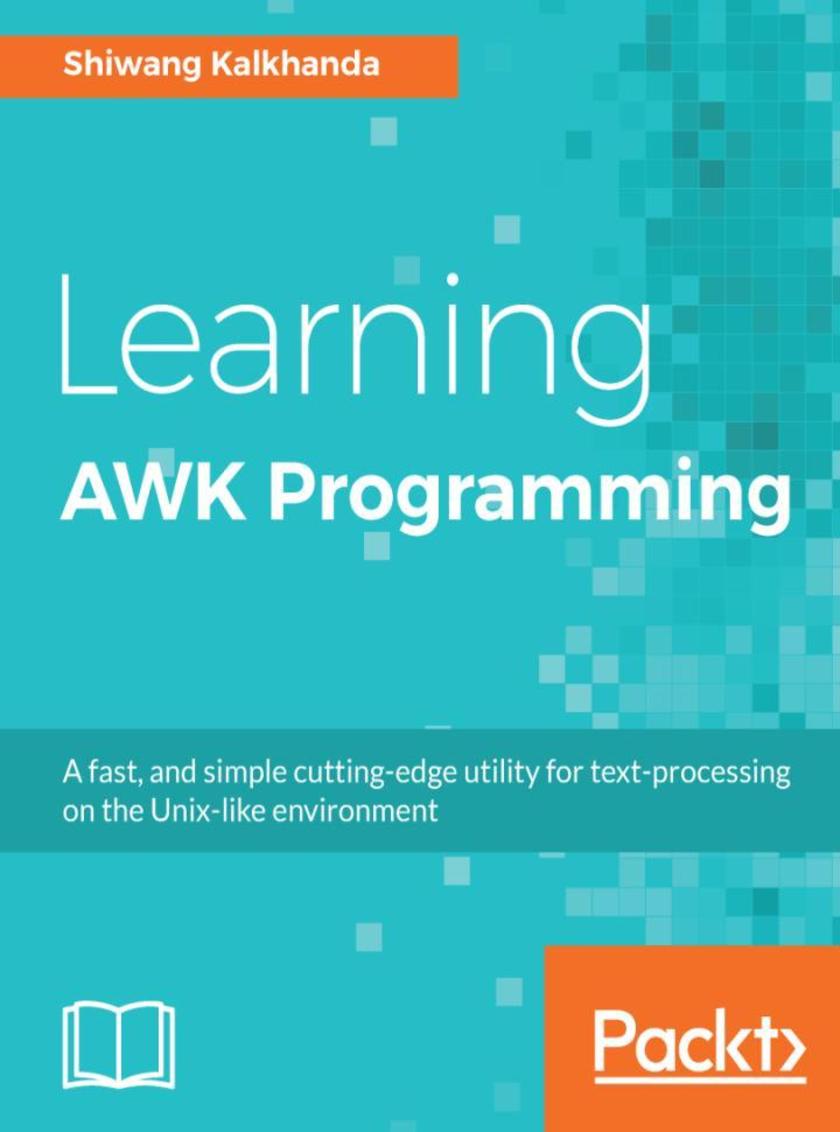
Learning AWK Programming
¥73.02
Text processing and pattern matching simplified About This Book ? Master the fastest and most elegant big data munging language ? Implement text processing and pattern matching using the advanced features of AWK and GAWK ? Implement debugging and inter-process communication using GAWK Who This Book Is For This book is for developers or analysts who are inclined to learn how to do text processing and data extraction in a Unix-like environment. Basic understanding of Linux operating system and shell scripting will help you to get the most out of the book. What You Will Learn ? Create and use different expressions and control flow statements in AWK ? Use Regular Expressions with AWK for effective text-processing ? Use built-in and user-defined variables to write AWK programs ? Use redirections in AWK programs and create structured reports ? Handle non-decimal input, 2-way inter-process communication with Gawk ? Create small scripts to reformat data to match patterns and process texts In Detail AWK is one of the most primitive and powerful utilities which exists in all Unix and Unix-like distributions. It is used as a command-line utility when performing a basic text-processing operation, and as programming language when dealing with complex text-processing and mining tasks. With this book, you will have the required expertise to practice advanced AWK programming in real-life examples. The book starts off with an introduction to AWK essentials. You will then be introduced to regular expressions, AWK variables and constants, arrays and AWK functions and more. The book then delves deeper into more complex tasks, such as printing formatted output in AWK, control flow statements, GNU's implementation of AWK covering the advanced features of GNU AWK, such as network communication, debugging, and inter-process communication in the GAWK programming language which is not easily possible with AWK. By the end of this book, the reader will have worked on the practical implementation of text processing and pattern matching using AWK to perform routine tasks. Style and approach An easy-to-follow, step by step guide which will help you get to grips with real-world applications of AWK programming.




 购物车
购物车 个人中心
个人中心



